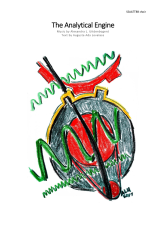It’s been a while since I have made progress on the “Sandra Bogerd” project. Music continues in some form all the time, along with creative projects, but has mostly been in the form of choral composition or semichorus performance since the aborted SAS trio project.
But the past two weeks things have got going again via video creation. First up was a LOLcat Christmas video that started out as an excuse to put up the recording of the trio from my Missa Lolcat composition, performed in 2018 by ROCS. It then evolved to something else, as I realised the performance didn’t quite match the mood of the LOLcat story I was creating, so I recorded a canon version of the “mou mou” section of Missa LOLcat’s Agnus Dei for the first part of the video, and generated a sinsy-rendered version of an accompanying “mew” phrase of the Credo solo to provide contrast for the Happymass “storee”.
Then, feeling a bit more video-fluent, and while reflecting about my cousin Bea, who died in June, but had helped me film some footage for my Tiger song, I tackled the “I am the Tiger” music video project. I’m reasonably pleased with the results, though I wish the tiger footage was a bit better quality.
I am the Tiger is my most popular song, based on downloads and streams. I’m pleased to have finally produced a video for it. I hope you enjoy it.

